Gyebangsan Mountain (계방산 (평창))
14.1Km 2019-07-06
1243, Unduryeong-ro, Pyeongchang-gun, Gangwon-do
+82-33-332-6419
At an altitude of 1,579.1 meters above sea level, Gyebangsan Mountain, which faces Odaesan Mountain on the eastern part of the Taebaeksan Mountain Range, is the fifth tallest mountain in South Korea, after Hallasan Mountain, Jirisan Mountain, Seoraksan Mountain, and Deogyusan Mountain. On the west side of Gyebangsan Mountain is Unduryeong Pass(1,089 m), which has a vehicle accessible road. Asiatic black beers are said to habitate in the deep valleys on the north side, and there is Bangadari mineral water and other mineral water sources on the south side. With many varieties of herbs and wild flowers growing naturally in the area, it is also well known as a place to dig for wild ginseng. Its rare Japanese yew trees and royal azalea combined with its similar terrain to Seoraksan Mountain's Daecheongbong Peak has caused the mountain to be a highly protected ecological environment.
Gyebangsan Mountain is particularly popular for winter hikers, who can get beautiful views of the snowy landscapes of the mountain even until March. On top of that, since the difference in evelation from Unduryeong to the top of Gyebangsan is only 488 m, it welcomes even novice hikers as well. From the summit, one can see the backboone of Baekdudaegan Mountain, and with its panoramic views of Seoraksan Mountain to the north, Odaesan Mountain and Daegwallyeong to the east, and Taegisan and Hoegisan Mountains to the west, it is one of the best views in the area.
Lohas Park & Wacapuca (로하스파크&와카푸카)
15.5Km 2020-01-03
162-28, Jageundosa-gil, Pyeongchang-gun, Gangwon-do
Lohas Garden & WacaPuca is an eco-themed park located 700 meters above sea level in the highlands of Pyeongchang, Gangwon-do Province. Sitting in the most beautiful national forest of Phyeongchang (Total area 3,305,785㎡ Structural area 396,694㎡), Lohas Garden offers the most natural scenic views in Korea.
Daegwallyeong National Recreational Forest (국립 대관령자연휴양림)
15.9Km 2022-06-20
133, Sampoam-gil, Gangneung-si, Gangwon-do
+82-33-641-9990
Daegwallyeong National Recreational Forest divides Gangwon Province from east to west and is known for its famous pine tree forests. It was designated as a suitable resting place to enjoy as it’s harmoniously situated in a valley surrounded by lush vegetation. Beautiful view of Gangneung and the East Sea can be seen day and night.
Buyeondong Village (부연동마을)
16.7Km 2024-03-18
1298 Samsan-ri, Yeongok-myeon, Gangneung-si, Gangwon-do
Located at the foot of Odaesan Mountain, north of Gangneung, Buyeondong Village maintains the historic appearance and traditions of Korea's rural villages from the past. It is also known as Gamaso Village, named after the local Buyeondonggyegok Valley that runs through it. Both the valley and the village boast clear and beautiful scenery. Due to its remote location, the village is not served by public buses. It can be reached by car in about 40 minutes from Gangneung Station.
Hongcheon Ginkgo Forest (홍천 은행나무숲)
17.2Km 2024-02-28
686-4 Gwangwon-ri, Nae-myeon, Hongcheon-gun, Gangwon-do
Hongcheon Ginkgo Forest, adorned with over 2,000 ginkgo trees planted at intervals of every five meters, is a private sanctuary that opens its gates to the public exclusively in October. This enchanting forest, cultivated and nurtured by a single individual for more than thirty years, transforms into a golden paradise in autumn. In addition, the nearby Sambong Springwater, recognized as one of Hongcheon's nine scenic wonders, along with the Guryongnyeong Pass, enhances the area's appeal as a prime tourist destination, making the forest an ideal spot for autumn visits.
Gangneung Anbandegi Tourist Farm (강릉안반데기관광농원)
17.3Km 2025-07-10
203 Anbandegi 1-gil, Wangsan-myeon, Gangneung-si, Gangwon-do
033-644-5882
Located at a x_height of 1,100 meters above sea level in Gangneung, Anbandegi Tourist Farm is a privately owned farm. It offers various healing experience programs such as wild vegetable picking, healing forest trail trekking, stargazing, and camping, making it a perfect therapeutic escape.
Sambong Tongnamu Sanjang (삼봉 통나무산장)
17.7Km 2024-03-27
42 Sambonghyuyang-gil, Nae-myeon, Hongcheon-gun, Gangwon-do
033-435-2829
Sambong Tongnamu Sanjang is renowned for its spicy and savory dakbokkeumtang (spicy braised chicken), prepared with fresh chicken. The dish is further enhanced with potatoes and a mix of vegetables, which lend a subtle sweetness that complements the overall flavor. The restaurant also offers other popular dishes, including baeksuk (whole chicken soup) and minmul maeuntang (spicy freshwater fish stew). The log cabin-style exterior of the restaurant adds to its charm, giving diners the feeling of visiting a cozy mountain lodge.
Dutasan National Recreational Forest (국립 두타산자연휴양림)
17.8Km 2021-03-04
132, Achagol-gil, Pyeongchang-gun, Gangwon-do
+82-33-334-8815
Dutasan National Recreational Forest is located at the foot of Dutasan Mountain, which rises 1,357 meters above the sea level and straddles the border between Jinbu-myeon of Pyeongchang-gun and Jeongseon-gun. The recreational forest is in the center of many popular attractions, including Odaesan National Park, Woljeongsa Temple, and beautiful valleys. The robust and rich forest is filled with a wide variety of animals such as badgers, raccoons, boars, and hares, as well as abundant medicinal herbs, and trees such as huge birch, nut trees and lime trees.
Daegwallyeong Museum (대관령박물관)
17.9Km 2021-07-22
1, Daegwallyeongyet-gil, Gangneung-si, Gangwon-do
+82-33-660-3830
Daegwallyeong Museum is located in Gangneung-si, Gangwon-do. It is housed in a building that resembles a dolmen, striking a balance with the surrounding landscape and earning it an Outstanding Architecture Award from the Construction Association of Korea and the Best Award from Gangwon-do.
The museum has six exhibition halls, including those that are named after the guardian gods that represent the four directions. Cheongnyongbang (Room of the Blue Dragon - East) is decorated in blue and displays celadon and traditional ceramics. Baekobang (Room of the White Tiger - West) is in white and exhibits Buddhist art and wooden dolls. Jujakbang (Room of the Red Vermillion - South) is in red and displays a bridal palanquin, folk paintings, and calligraphy. The black Hyeonmubang (Room of the Black Turtle - North) displays bronze relics. Also, there is the Togibang (Earthenware) showing Prehistoric era shacks and earthenware, and Uribang, exhibiting wooden furniture and folk craftwork. The outdoor space offers an exhibit of stone pagodas and statues as well as a thatched cottage and an operating water mill.
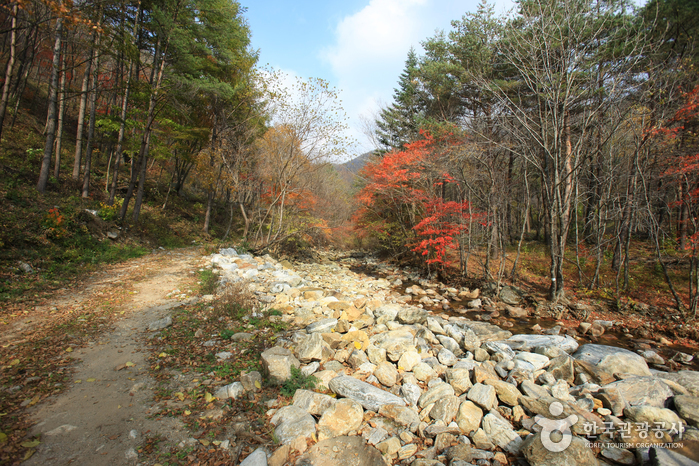
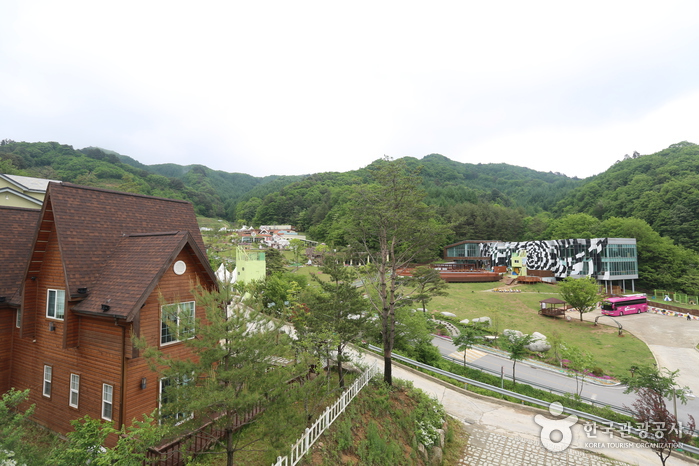
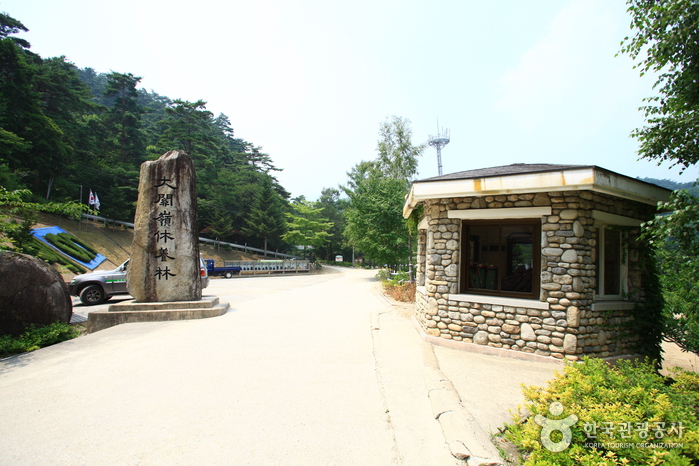
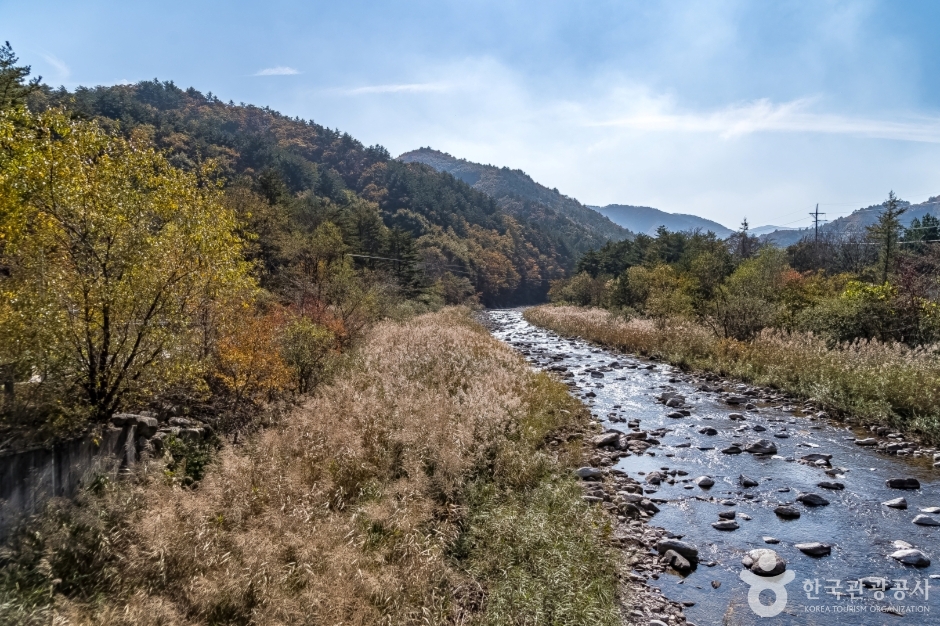
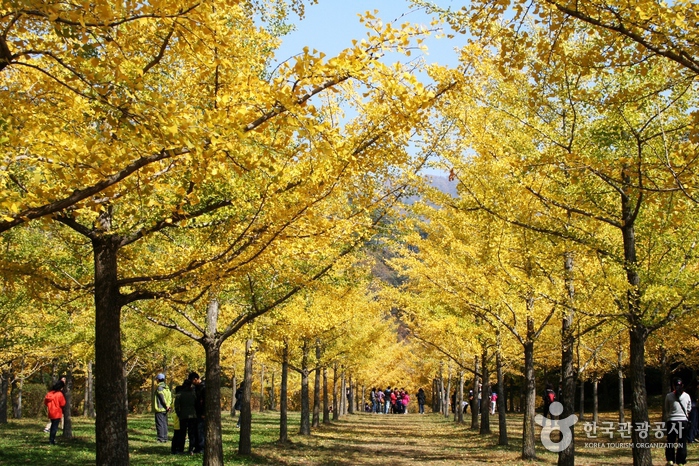
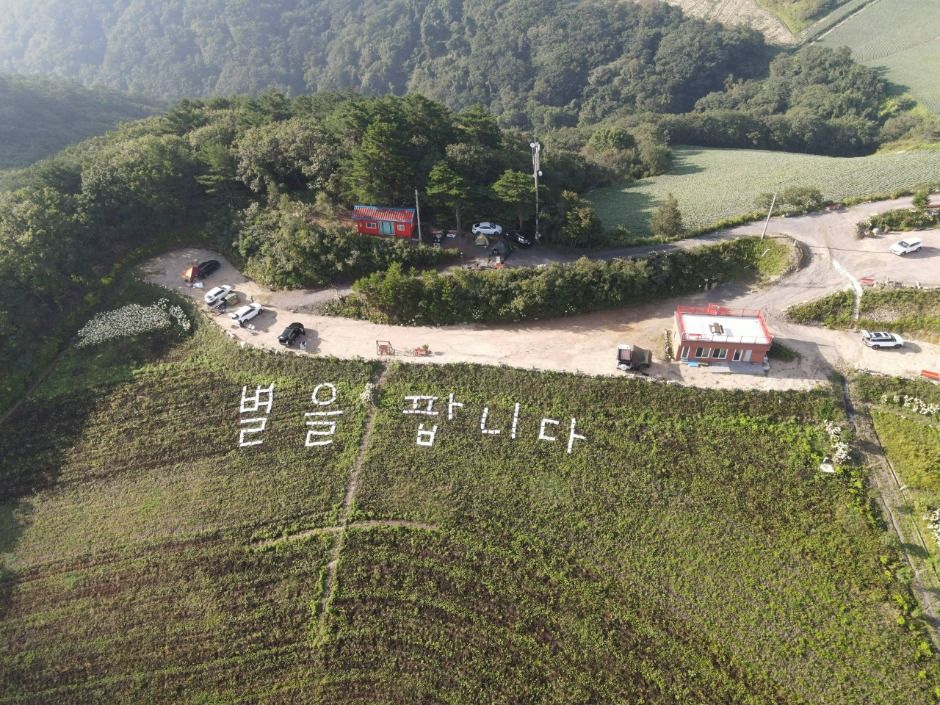
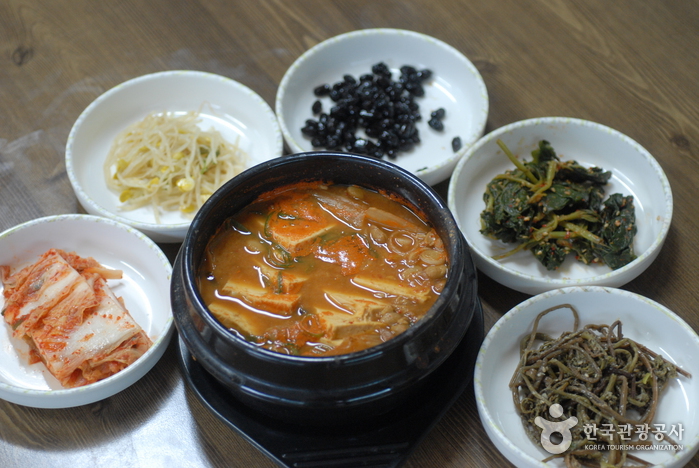
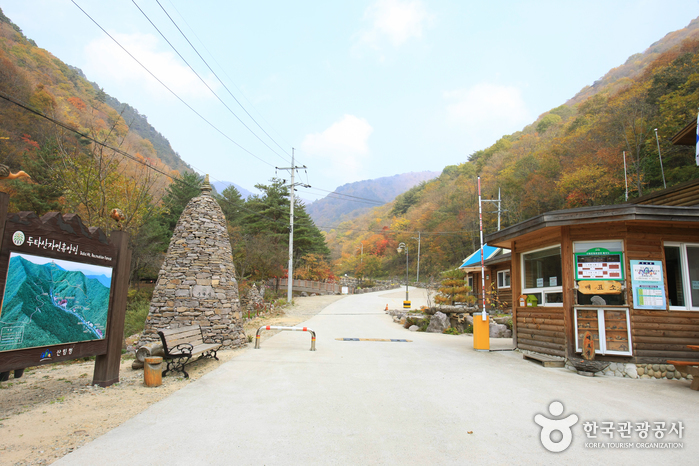
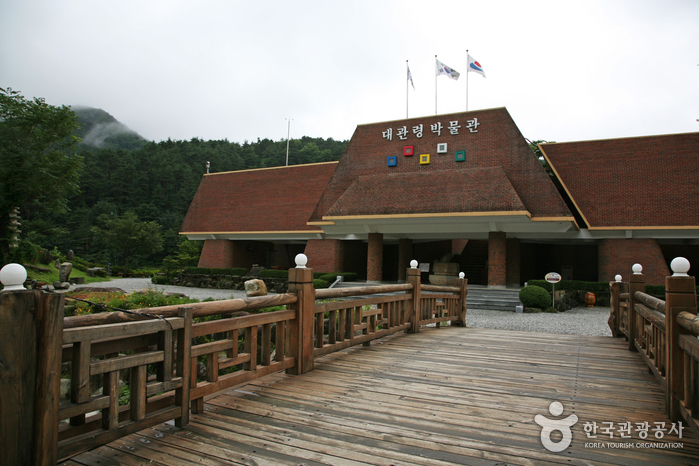
 English
English
 한국어
한국어 日本語
日本語 中文(简体)
中文(简体) Deutsch
Deutsch Français
Français Español
Español Русский
Русский